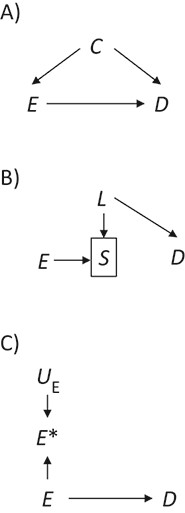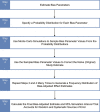Monte Carlo Simulation Approaches for Quantitative Bias Analysis: A Tutorial
- PMID: 34664653
- PMCID: PMC9005059
- DOI: 10.1093/epirev/mxab012
Monte Carlo Simulation Approaches for Quantitative Bias Analysis: A Tutorial
Abstract
Quantitative bias analysis can be used to empirically assess how far study estimates are from the truth (i.e., an estimate that is free of bias). These methods can be used to explore the potential impact of confounding bias, selection bias (collider stratification bias), and information bias. Quantitative bias analysis includes methods that can be used to check the robustness of study findings to multiple types of bias and methods that use simulation studies to generate data and understand the hypothetical impact of specific types of bias in a simulated data set. In this article, we review 2 strategies for quantitative bias analysis: 1) traditional probabilistic quantitative bias analysis and 2) quantitative bias analysis with generated data. An important difference between the 2 strategies relates to the type of data (real vs. generated data) used in the analysis. Monte Carlo simulations are used in both approaches, but the simulation process is used for different purposes in each. For both approaches, we outline and describe the steps required to carry out the quantitative bias analysis and also present a bias-analysis tutorial demonstrating how both approaches can be applied in the context of an analysis for selection bias. Our goal is to highlight the utility of quantitative bias analysis for practicing epidemiologists and increase the use of these methods in the epidemiologic literature.
Keywords: Monte Carlo sampling; bias analysis; confounding; measurement error; misclassification; selection bias; simulation study.
© The Author(s) 2021. Published by Oxford University Press on behalf of the Johns Hopkins Bloomberg School of Public Health. All rights reserved. For permissions, please e-mail: journals.permissions@oup.com.
Figures






References
-
- Miquel P. A Dictionary of Epidemiology. 6th ed. New York, New York: Oxford University Press; 2014.
-
- Lash TL, Fink AK. Semi-automated sensitivity analysis to assess systematic errors in observational data. Epidemiology. 2003;14(4):451–458. - PubMed
-
- Phillips CV. Quantifying and reporting uncertainty from systematic errors. Epidemiology. 2003;14(4):459–466. - PubMed
-
- Rothman KJ, Greenland S, Lash TL. Chapter 9. Validity in epidemiologic studies. In: Modern Epidemiology. Philadelphia, PA: Lippincott, Williams & Wilkins; 2008:128–147.
-
- Greenland S. Multiple-bias modelling for analysis of observational data. J R Stat Soc A Stat Soc. 2005;168(2):267–306.

